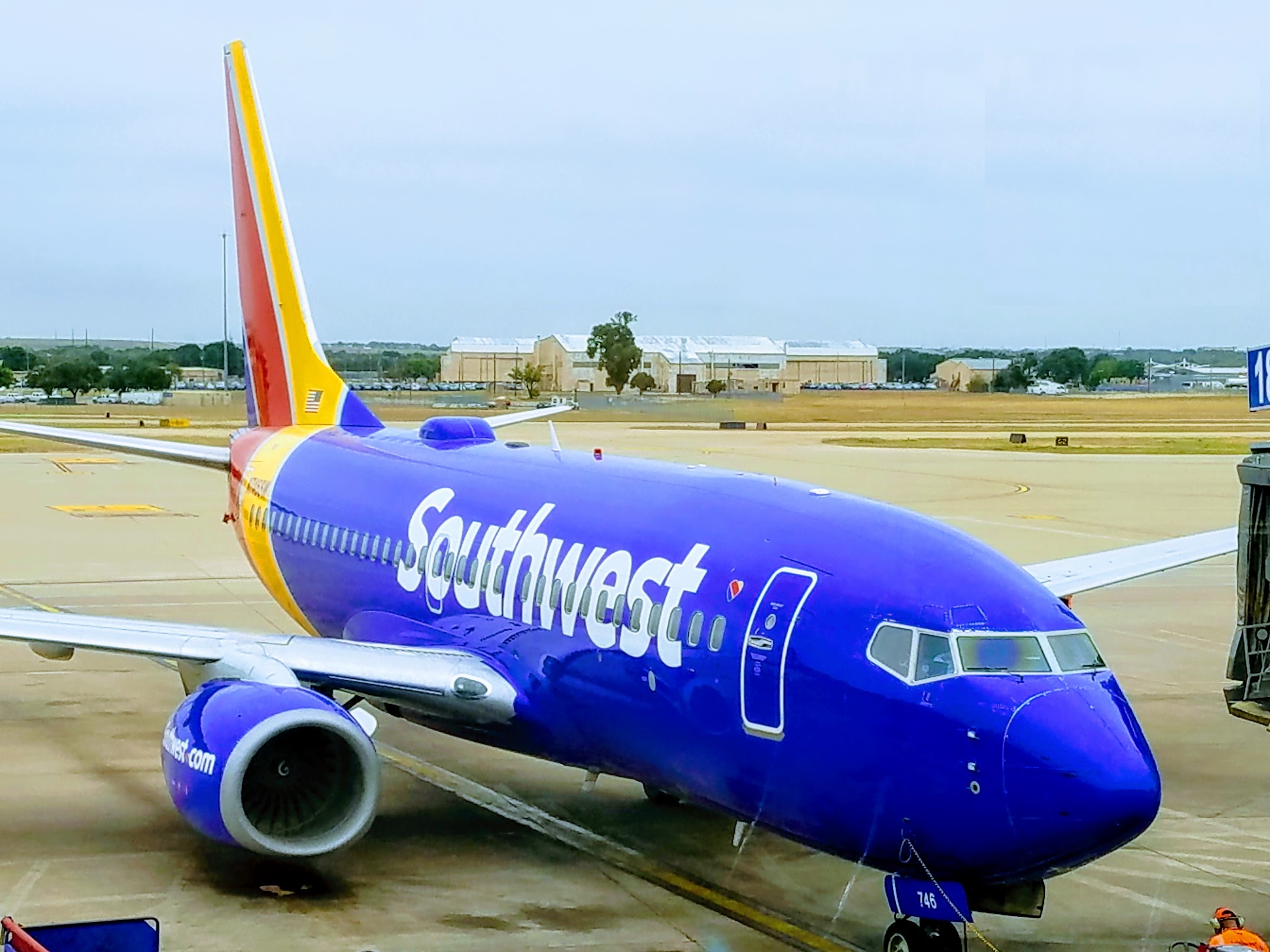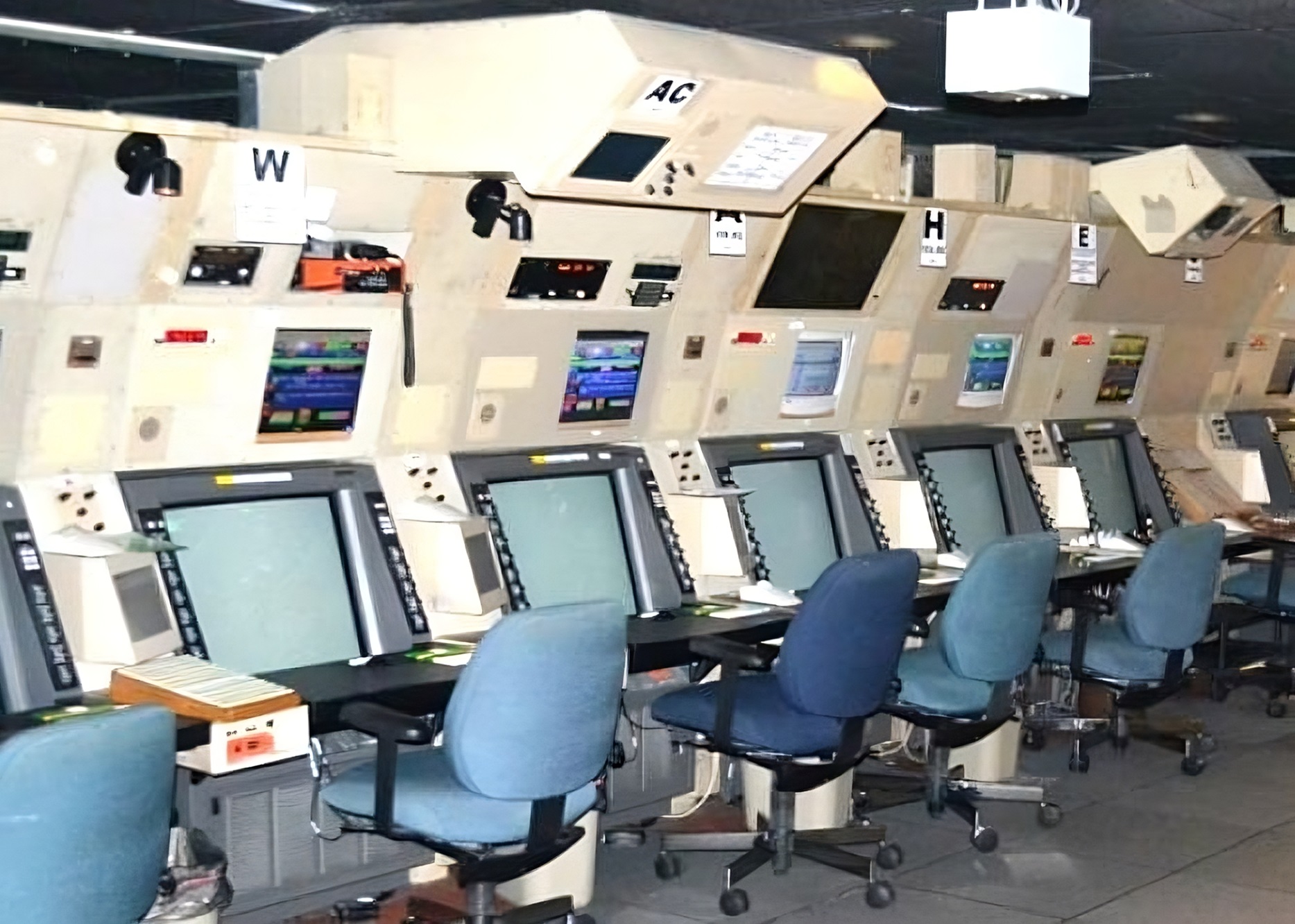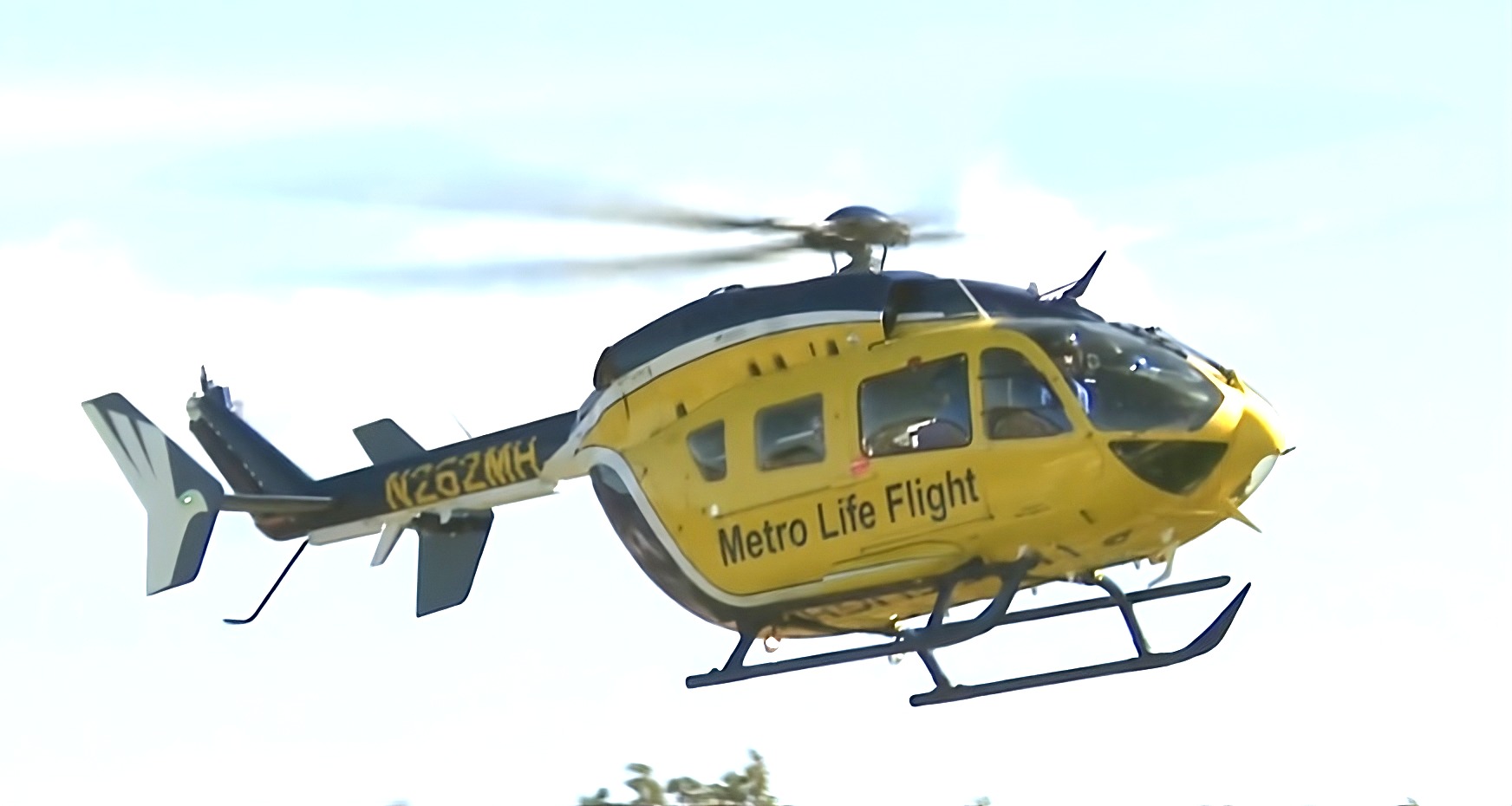On October 29, 2025, Southwest Airlines flight 1333 from Baltimore to Cleveland was cleared for a visual approach on arrival to Runway 06 Left.
MetroHealth “Life Flight 3” Eurocopter EC-145 was flying northbound across the airport’s approach corridor.
Hopkins Tower, responsible for sequencing both aircraft, saw the developing conflict and told the helicopter to maintain 2,000 feet and maintain visual separation from the inbound jet. The helicopter crew confirmed that they had the Southwest 737-700 in sight and would stay clear.

Moments later, the controller asked the helicopter whether it could pass behind the Southwest jet? Instead, the pilot replied that it would be “better if we go above it and in front of it, if we can.” The controller’s only response was “Roger.” No specific heading or altitude instruction followed.
That brief, ambiguous exchange set up the geometry for a near-collision: a 737 descending on final at about 140 knots, and a helicopter climbing slightly and crossing ahead at about 90 knots—both converging near the same altitude and point in space.
The two aircraft came within 0.56 nautical miles. The 737’s Traffic Collision Avoidance System issued a Resolution Advisory, instructing the pilots to climb, and they banked right to avoid the helicopter, which was now passing directly ahead of them. The Southwest crew notified tower that they were executing a go-around.

There was no patient on board the medical helicopter. It was just repositioning to pick up a transfer patient at St. John Medical Center, so it was not operating under active “MEDEVAC” priority status, even though its call-sign included “Life Flight.”
The Southwest pilots and their onboard technology did exactly what they should have: respond to the collision alert and break off the approach. The helicopter crew, despite reporting the 737 “in sight,” failed to maintain actual separation. The tower controller permitted the crossing to continue without issuing instructions even as the conflict became clear.
- Allowed a crossing of the final approach corridor at essentially the glideslope altitude and convergence point with an inbound airliner, relying on pilot‑applied visual separation.
- Accepted — via a non‑directive “Roger” — the helicopter’s plan to go “above and in front” of the faster, descending jet at short range, instead of issuing positive control (vector/altitude/hold) or coordinating delay of WN1333 with approach.
The helicopter pilot continued on a collision course and proposed to cut ahead and above an airliner on short final rather than pass behind. If unable to ensure separation, the correct response is “unable”, followed by a request for vectors.

There’s blame here for both air traffic control (essentially, “Traffic in sight, but we’re not going to do anything to avoid it”) and the helicopter pilot (gallows humor includes “Lifeless Flight 3” “piloted by two deer”). The Southwest crew did exactly what they should have done. Meanwhile, commenters see this as almost “DCA all over again” where an Army helicopter flew in the approach path (above authorized flight level) of an arriving American Eagle flight, ending in disaster.
It seems like continuing to allow “visual‑only” crossing of an active final approach inside a minimum distance at similar altitude is… unwise. Separation must be assured. And “Roger” to risky proposals should perhaps be replaced with affirmative directives or “unable” – if a pilot proposes to pass in front, answer with a directive: “Negative. Turn right heading 090, maintain 3,000.”
Meanwhile, priority handling for a Medevac – without patient onboard! – does not equal the right to self‑separate through conflicting traffic. When MEDEVAC is truly active, move everyone else but do it with vectors and holds, not visual separation.
(HT: One Mile at a Time)


Can’t wait for AI to take over ATF, with humans in more of a monitoring/supervising role.
Unfortunately, at the rate we modernize our ATF in the US, that should be some time in the 25th century.
This business will get out of control. It will get out of control and we’ll be lucky to live through it.
From my experience flying helicopters ATC does not issue instructions to helicopters. They only approve or deny requests from helicopters due to their unique operational capabilities. So the Roger was just ATC deferring to the helicopter for their assessment. It sounds like the helicopter maybe did not make the right assessment.
None of this sounds good, though the helicopter pilots may have been concerned about wake turbulence behind the jet. That can be incredibly powerful–horizontal tornadoes coming off the wings that slowly and invisibly settle while drifting with the wind. But if so they presumably had alternative if less efficient routes. Hopefully the incident will get proper review.
See what the REPUBLICAN shutdown has nearly wrought upon us. Gee, boy, howdy, they really don’t want those Epstein files to come out, do they…
See what the DEMOCRAT shutdown has nearly wrought upon us. Gee, boy, howdy, they really don’t want those Biden files to come out, do they…
@1990 – hmmmm it is the Dims that keep voting down the resolution to fund the government. The drop off in TEMPORARY enhanced ACA credits was set up by Biden and the Dim Congress to expire 12/31/25 and now the Dims are the ones wanting to change the rules and holding millions hostage. Even the union for Federal employees is asking them to approve the resolution.
However you never let facts get in the way of your bias do you?
99% of the time, those who write and comment on this blog are more concerned with credit cards, food, wine, seat back TV sets, the number of lie flat seats, etc.- not safety.
Great to hear that a tragedy was avoided..
The results and byproduct of The Democrat Party refusing to reopen the Government 1990.
The results and byproduct of Government Owned and Operated Air Traffic Control.
“Nav America” is long, long overdue.
@Retired Gambler — Apparently, you don’t respect our Dear Leader…
“If there is a shutdown I think it would be a tremendously negative mark on the president of the United States. He’s the one that has to get people together.”
“When they talk about the government shutdown, they’re going to be talking about the president of the United States, who the president was at that time. They’re not going to be talking about who was the head of the House, the head the Senate… So I really think the pressure is on the president.”
@Denver Refugee — While I respect Canada for its APPR air passenger right legislation, we should not support privatization, even as non-profits (like in Canada) for the FAA, ATC, or TSA.
Be warned that Project 2025 explicitly calls for privatization; they plan to break it, claim it’s broken, then steal it.
The helicopter pilots should have their licenses revoked. That would be a wake up call to others wanting to do the same thing.